AMD Reveals Radeon RX 6600 XT Specs, Pricing, and Performance
Prepping for another sold out launch on August 11
AMD's Radeon RX 6600 XT will officially launch on August 11, 2021, putting to rest the past couple of months of speculation and leaks. Will it manage to compete with the best graphics cards, and where will it fall in terms of our GPU benchmarks hierarchy—and more importantly, will more than a handful of people be able to buy the cards at something close to MSRP? These are good questions, and while the answer to that last question is almost certainly, "Sorry, not gonna happen," it should still bring some needed competition to the more moderately priced GPU segment.
First, let's talk official pricing. AMD says the RX 6600 XT will launch with a suggested retail price of $379. That's not quite the price many were hoping to see, but AMD says it has adjusted prices based on what people might see at retail. In other words, it's not pulling out a 'fake' $329 MSRP like Nvidia's RTX 3060, which generally sells for $500 or more right now—assuming you can even find one in stock. Check our GPU price index for more details. Of course, $379 is only the starting price, and we'll undoubtedly see much higher prices on many of the custom cards from AMD's AIB (add-in board) partners.
| Architecture | Navi 23 |
|---|---|
| Process Technology | TSMC N7 |
| Transistors (Billion) | 11.1 |
| Die size (mm^2) | 237 |
| SMs / CUs | 32 |
| GPU Cores | 2048 |
| Infinity Cache (MB) | 32 |
| Ray Accelerators | 32 |
| Base Clock (MHz) | ? |
| Boost Clock (MHz) | 2359 |
| VRAM Speed (Gbps) | 16 |
| VRAM (GB) | 8 |
| VRAM Bus Width | 128 |
| PCIe Link Width | Gen4 x8 |
| ROPs | 64 |
| TMUs | 128 |
| TFLOPS FP32 (Boost) | 9.7 |
| Bandwidth (GBps) | 256 |
| TDP (watts) | 160 |
| Launch Date | August 11, 2021 |
| Launch Price | $379 |
The Radeon RX 6600 XT specs have been widely leaked and guessed at, and it looks like many of those were fairly accurate. It will use a new Navi 23 GPU, which supports up to 32 CUs—and the RX 6600 XT will feature the fully enabled chip. That means 2048 streaming processors (aka, GPU cores), 32 ray accelerators, and 9.7 TFLOPS of FP32 compute. It will also feature a 128-bit memory interface with 8GB of GDDR6 16Gbps memory, good for 256GBps of bandwidth, augmented by 32MB of Infinity Cache. AMD also provided details on the die size, transistor count, and number of ROPs, which as expected are all quite a bit lower than on Navi 22. The TDP for the RX 6600 XT comes in at just 160W, requiring a single 8-pin power connector.
Figuring out just where the RX 6600 XT will land in terms of performance is a bit tricky. The raw specs aren't particularly impressive on the one hand, but we do know the RDNA2 architecture tends to deliver significantly better performance than AMD's previous GPUs—thanks in part to the Infinity Cache, but also helped a lot by the high clock speeds. 32MB won't be as beneficial as the 96MB and 128MB Infinity Cache sizes we've seen on other RX 6000-series GPUs, but AMD says the RX 6600 XT targets 1080p gaming, and that the cache size was chosen to best fit that market, while keeping costs in check.
That last part deserves emphasis. AMD says the Infinity Cache size was "carefully selected," but what it really means is that it balanced chip size with performance. The Navi 22 GPU already exists and powers the RX 6700 XT. That's a 40 CU chip with 96MB Infinity Cache and a 192-bit memory interface, plus the various other elements like the video controllers. Navi 23 still packs up to 32 CUs, so the reduction in die size on the compute elements would only be around 20%. All the video controller and video codec circuitry basically gets carried over, and spinning a new die just to save 20% in chip size probably isn't worth the effort. But by eliminating two memory channels (a 33% reduction) and cutting the Infinity Cache to 32MB (a 67% reducton), the final die size for Navi 23 ends up being significantly smaller than Navi 22.
Navi 22 measures 335mm^2 and has 17.2 billion transistors. Navi 23 has just 11.1 billion transistors and a die size of 237mm^2. That means the trimming of the CUs, memory channels, and Infinity Cache all combine to create a chip that's 29% smaller, perhaps with a similar reduction in performance. Where AMD can get around 160 Navi 22 chips out of a single 300mm wafer, it should be able to get about 230 Navi 23 chips from the same wafer. More chips per wafer means lower cost per chip, and with less GDDR6 memory and a lower board complexity, that's what allows AMD to sell the RX 6600 XT for $100 less than the RX 6700 XT — though in a normal market, these likely would have been $400 and $300 GPUs rather than $480 and $380 GPUs.
But again, how does RX 6600 XT perform? Luckily, we don't just have to guess at performance, as AMD provided early benchmarks comparing the RX 6600 XT to some other graphics cards. As with all manufacturer-provided benchmarks, take these with a grain of salt. But AMD and Nvidia don't usually skew things too badly—they just like to focus on games they've specifically promoted, or titles that are more favorable toward their particular GPUs. Here are the initial test results from AMD:




We're not particularly concerned with the comparisons against older GPUs like the GTX 1060 6GB, even though that remains the most popular GPU on the planet according to the Steam Hardware Survey. Instead, let's focus on the RTX 3060, RX 5600 XT, and RX 5700 comparisons. We'll start with the Nvidia card, since that's the direct competition.
Looking at the ten games AMD selected for its 1080p benchmarks, three are Nvidia-promoted games (Battlefield 5, Cyberpunk 2077, and Death Stranding), three are more or less 'agnostic' (Doom Eternal, Forza Horizon 4, and Hitman 3), and four are AMD promoted games (Assassin's Creed Valhalla, Borderlands 3, Horizon Zero Dawn, and Resident Evil Village). That looks like a reasonable set of tests, and not every game strongly favors AMD. On average, using AMD's numbers, AMD says the RX 6600 XT outperforms the RTX 3060 by "up to 15%." Except, that comes from the ten-game average.
In the individual games, the RX 6600 XT was up to 33% faster (in Assassin's Creed Valhalla) and also beat the RTX 3060 by 20% or more in Borderlands 3 and Forza Horizon 4. Not surprisingly, those three games generally favor AMD's GPUs in performance. Nvidia's RTX 3060 only leads in one game, Horizon Zero Dawn, and was relatively close in Cyberpunk 2077 and Death Stranding. Otherwise, at least for the tests AMD provided, it looks like the RT 6600 XT will come out ahead. Of course, none of the tests were performed with DLSS enabled, or FidelityFX Super Resolution (AMD FSR) for that matter, and ray tracing wasn't enabled either.
AMD also tested five more popular esports games on the RTX 3060 and RX 6600 XT, and the margins are a lot closer there. The RX 6600 XT trails by 1% in Valorant and leads by up to 10% in the other four games. Not that most people are going to be worried about the difference between 553 and 556 fps, but if we include all 15 results, then AMD's RX 6600 XT on average leads the RTX 3060 by 9%. AMD also informed us (though it didn't provide any benchmark results) that it expects the RX 6600 XT performance to land between the RTX 3060 and RTX 3060 Ti, which at least partly explains the pricing.
Moving on to the RX 5600 XT and RX 5700 slide, this gives us a taste of the generational performance improvements. AMD didn't provide hard numbers but instead shows the RX 6600 XT beating the RX 5600 XT by 1.4x to 1.7x across four games. Given the newer RDNA2 architecture, significantly higher GPU clocks, and the 32MB Infinity Cache, those results shouldn't be too surprising. Oh, and it's 2.4x faster than the old GTX 1060 6GB.



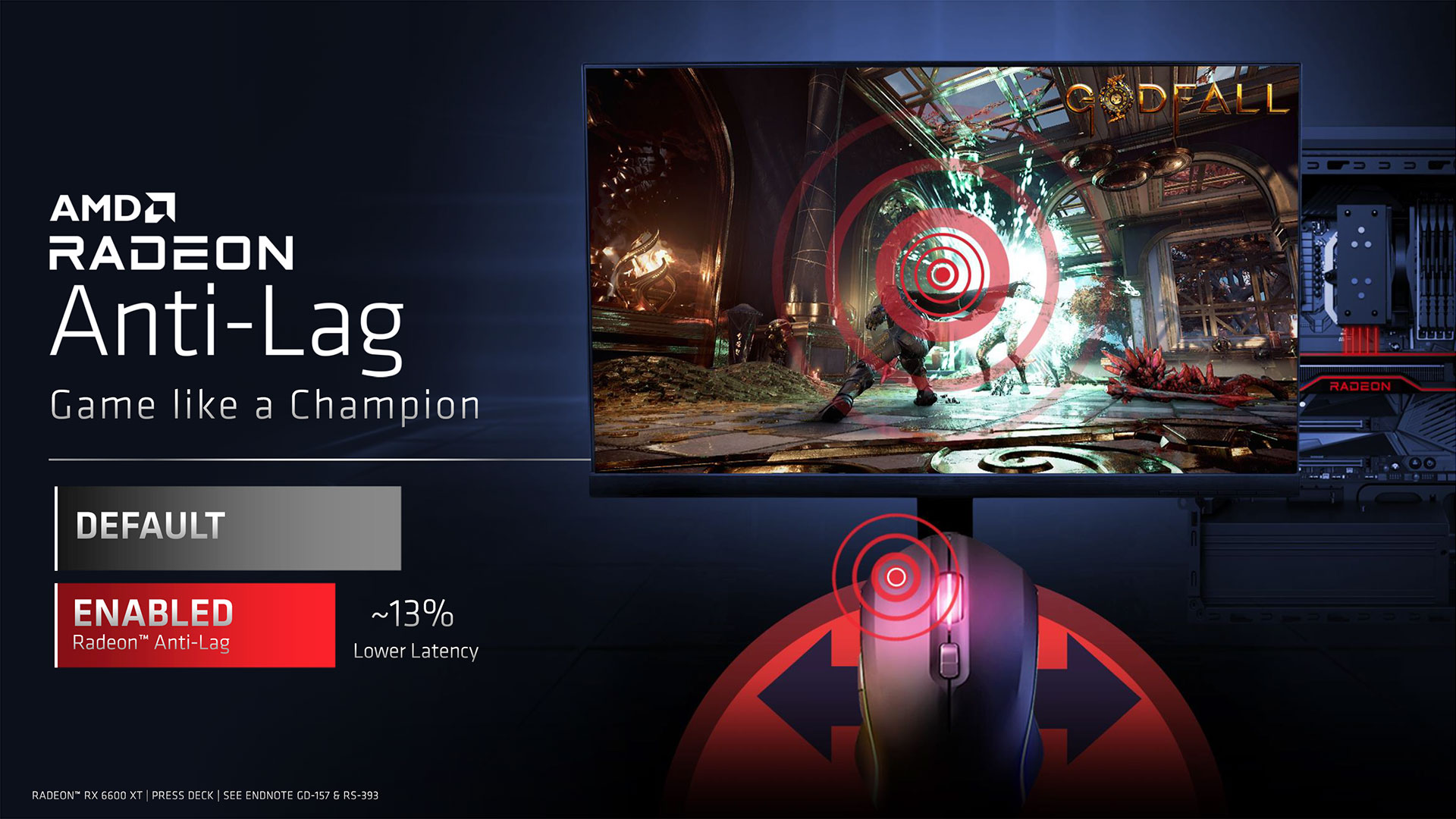
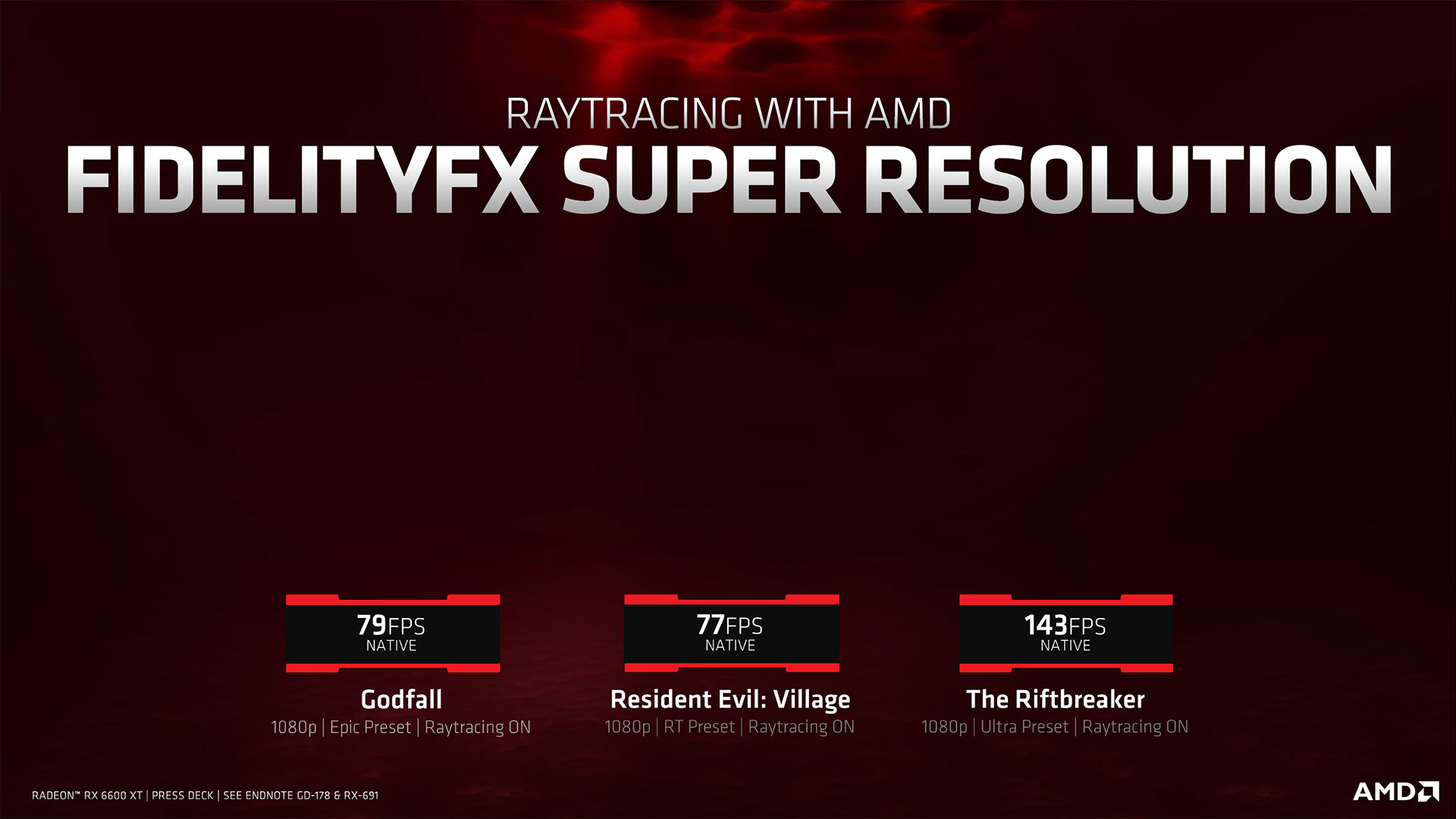





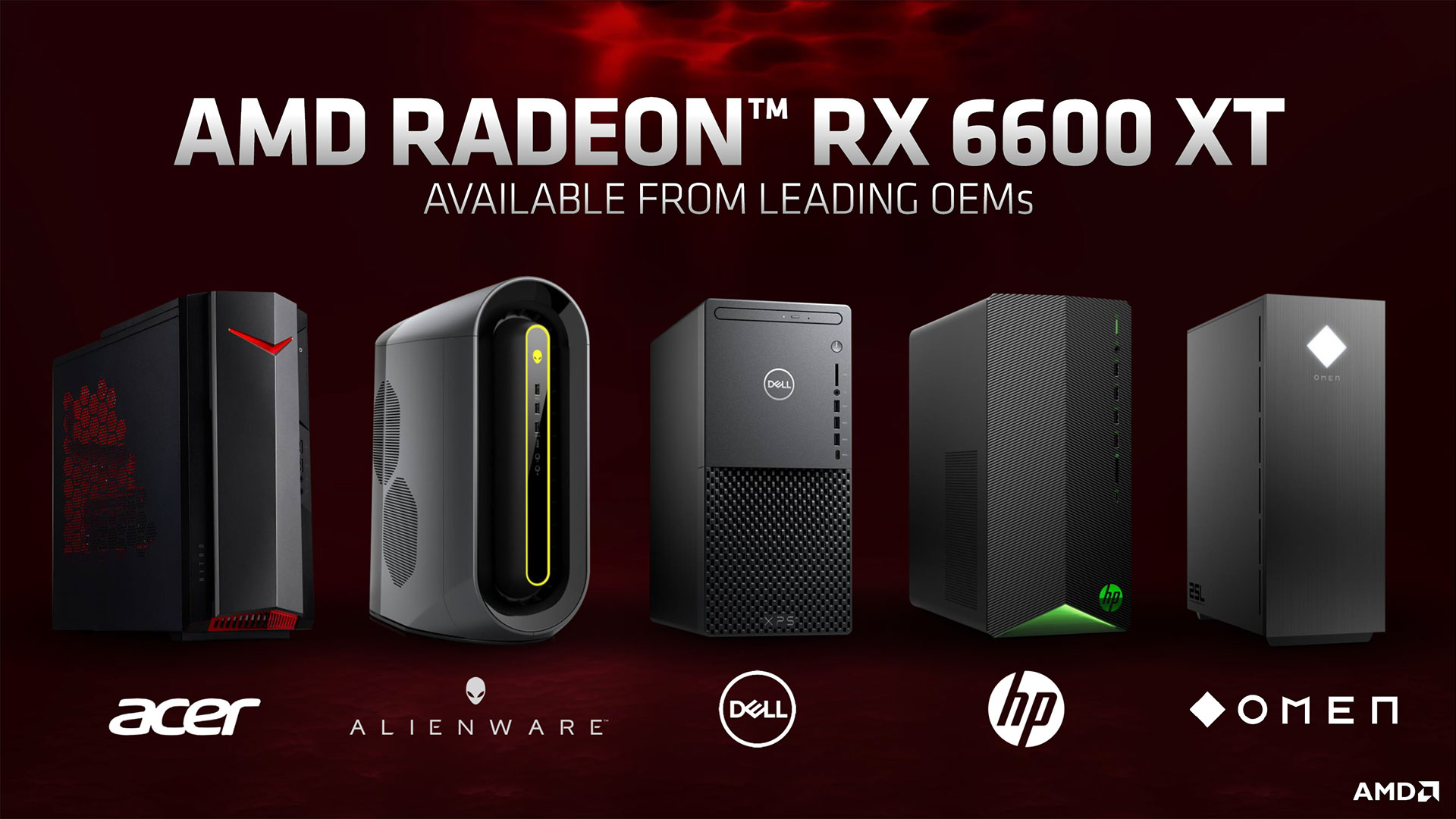

AMD also took some time to discuss other benefits of its graphics cards, including Smart Memory Access, Radeon Boost, Radeon Anti-Lag, and AMD FSR. This is the standard features discussion we usually see, and there's not too much more to say other than that these things exist and can be beneficial in some games. Nvidia has similar features, like Resizeable BAR support, Reflex, and DLSS, so we won't worry about getting bogged down in the details here.
AMD will launch the Radeon RX 6600 XT on August 11, and will have GPUs in both desktops and laptops from leading OEMs—the laptops will use the previously announced RX 6600M. There's no reference design for the desktop card—the RX 6600 XT shown above is merely a 3D render for marketing purposes—but there will be compact single-fan solutions as well as the usual mix of dual- and triple-fan coolers from all the major graphics card partners.
If all the current generation RTX 30-series and RX 6000-series GPUs were actually available starting at their official MSRPs, the RTX 3060 might end up as the better option. Nvidia generally has better ray tracing performance, and DLSS 2.0 is still a benefit in the more than 30 games that use the technology. We also like that Nvidia put 12GB of VRAM on the RTX 3060, even if it makes the 8GB on the RTX 3060 Ti and RTX 3070 look stingy. It also makes the RX 6600 XT look worse, but then for 1080p gaming, 8GB shouldn't be much of a problem for the next few years.
We'll have our own independent testing and analysis of the RX 6600 XT later, but the card looks promising. Again, we can't stress enough the importance of getting enough cards to market—something neither AMD nor Nvidia have been able to do since last summer. We don't expect that to change, but AMD does seem to have more RX 6700 XT cards for sale than it has RX 6800, RX 6800 XT, and RX 6900 XT combined. Hopefully, that means it will have even more RX 6600 XT cards—it should, since Navi 23 should be a smaller chip that costs less to produce.
Check back in a couple weeks for our full review. We've included the complete slide deck from AMD's presentation below for anyone that's interested, along with pictures of RX 6600 XT cards from AMD's partners.
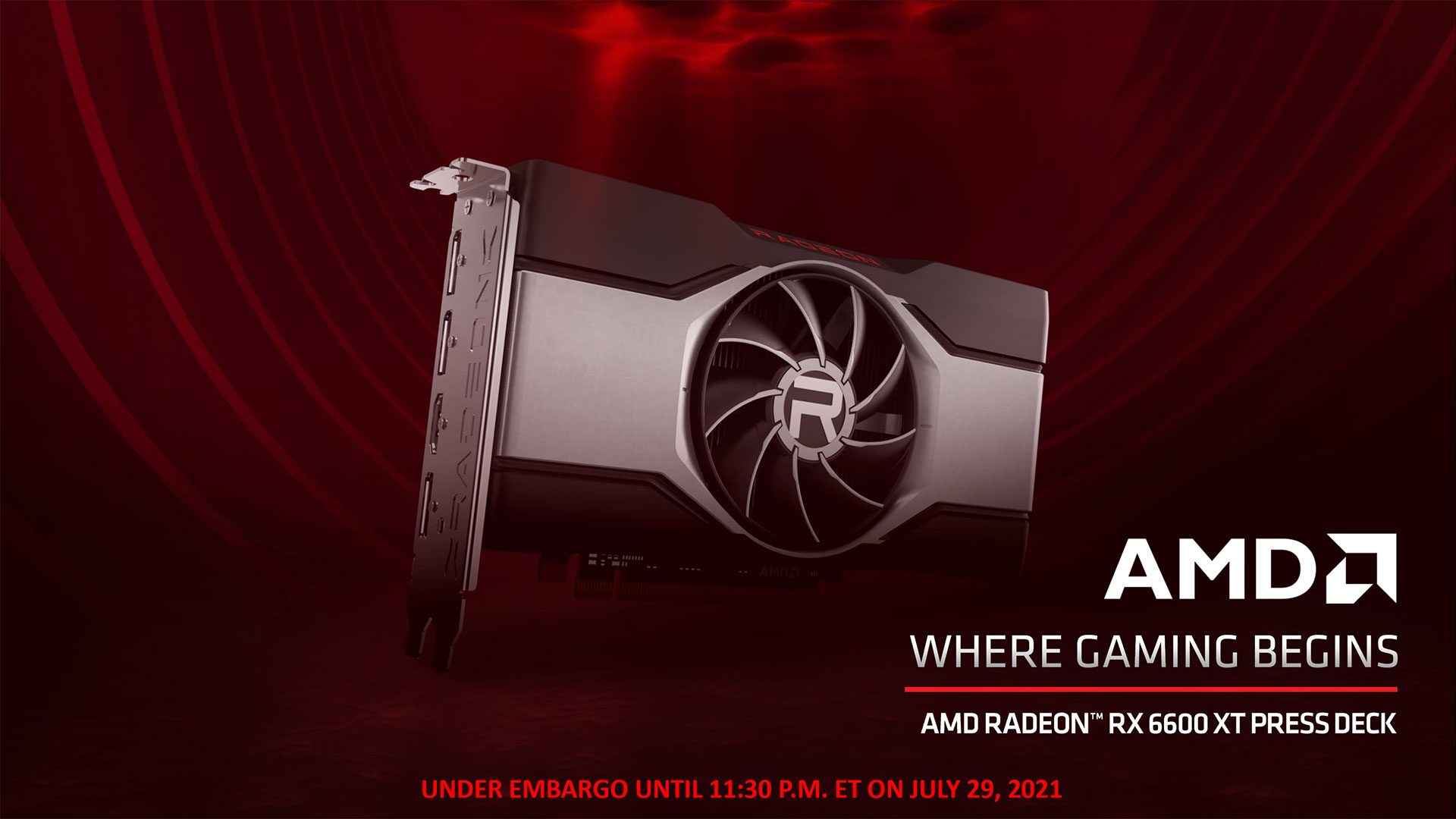





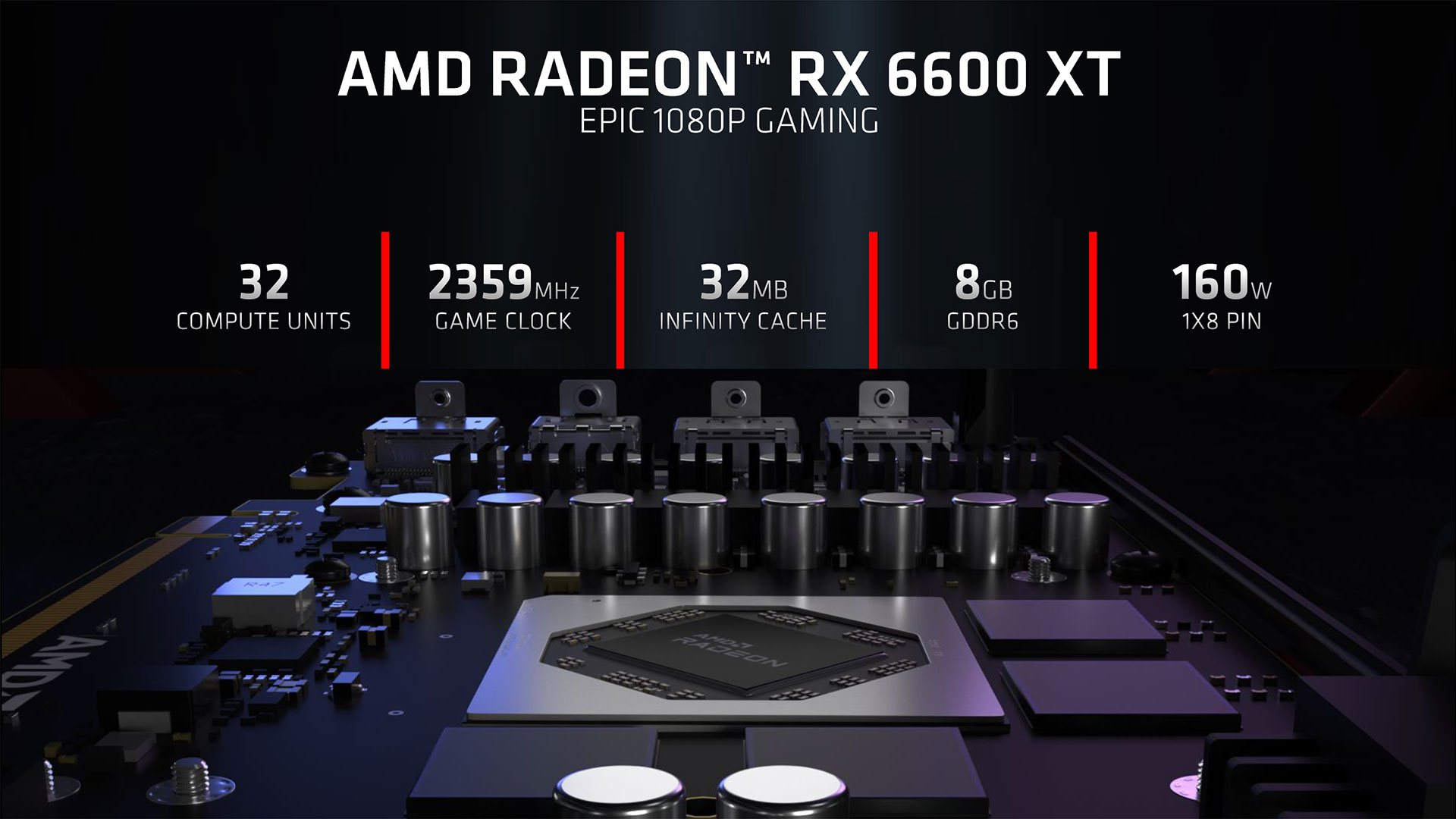
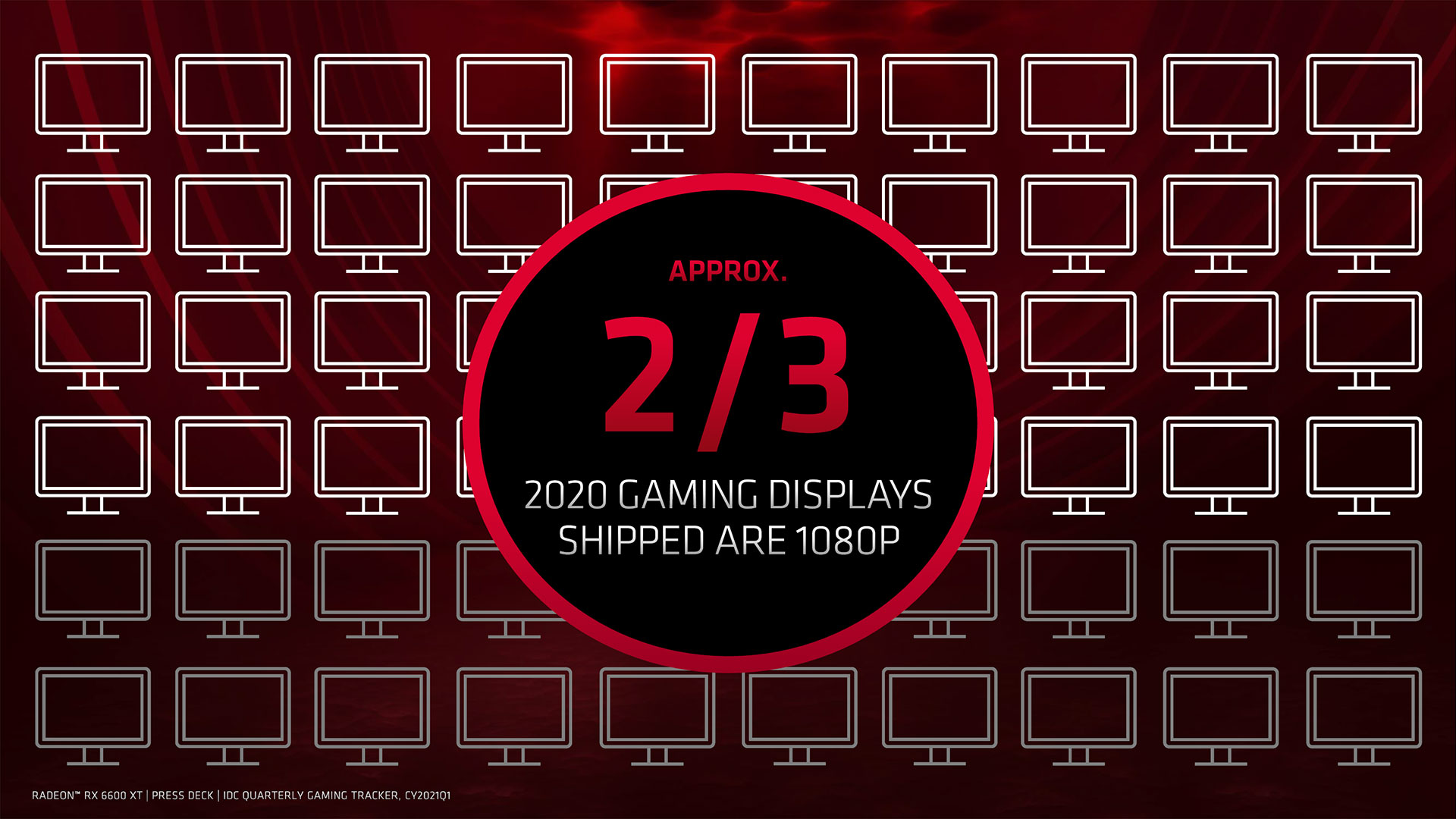




















ASRock RX 6600 XT


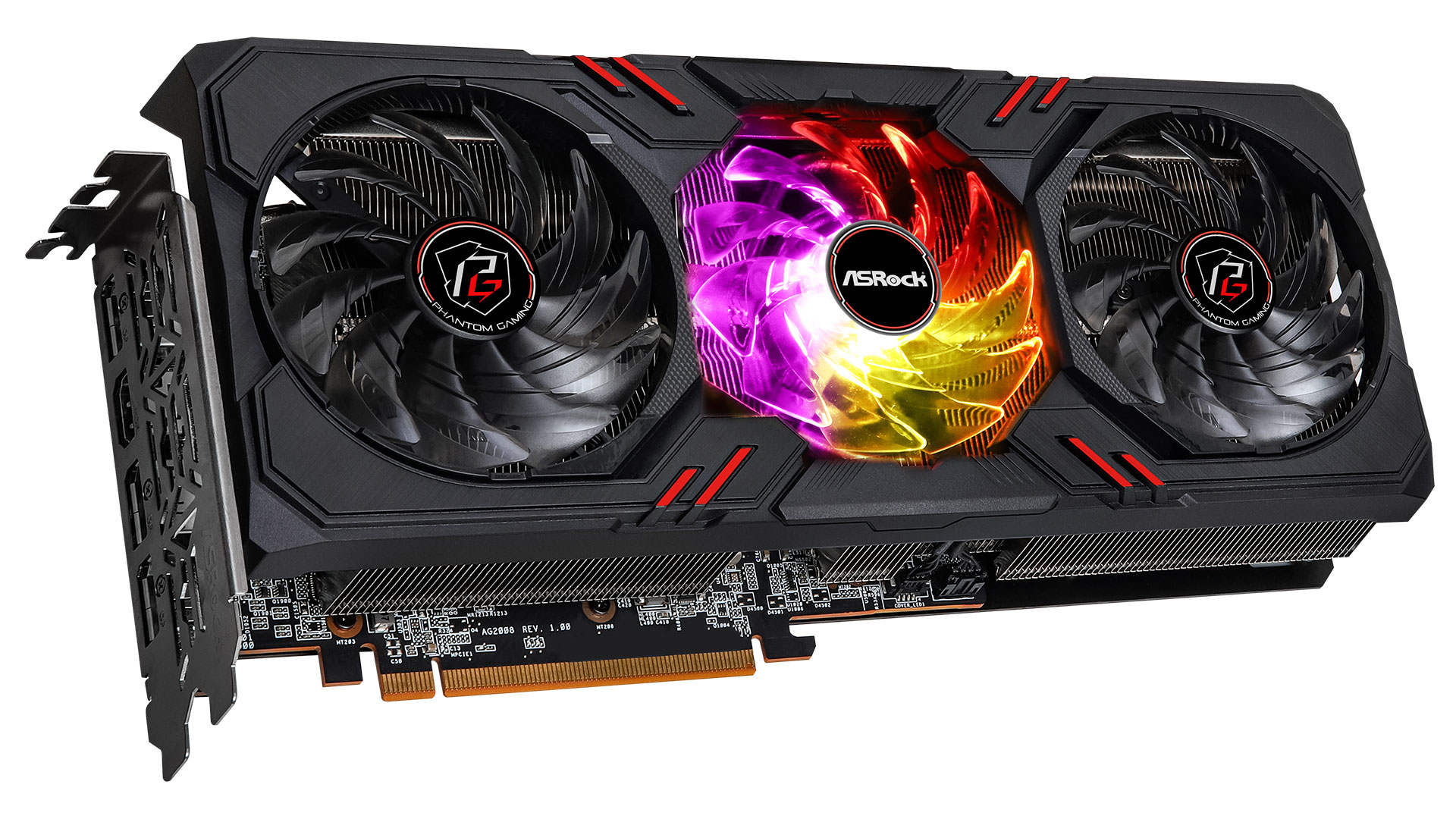


Asus RX 6600 XT






Biostar RX 6600 XT





Gigabyte RX 6600 XT





MSI RX 6600 XT

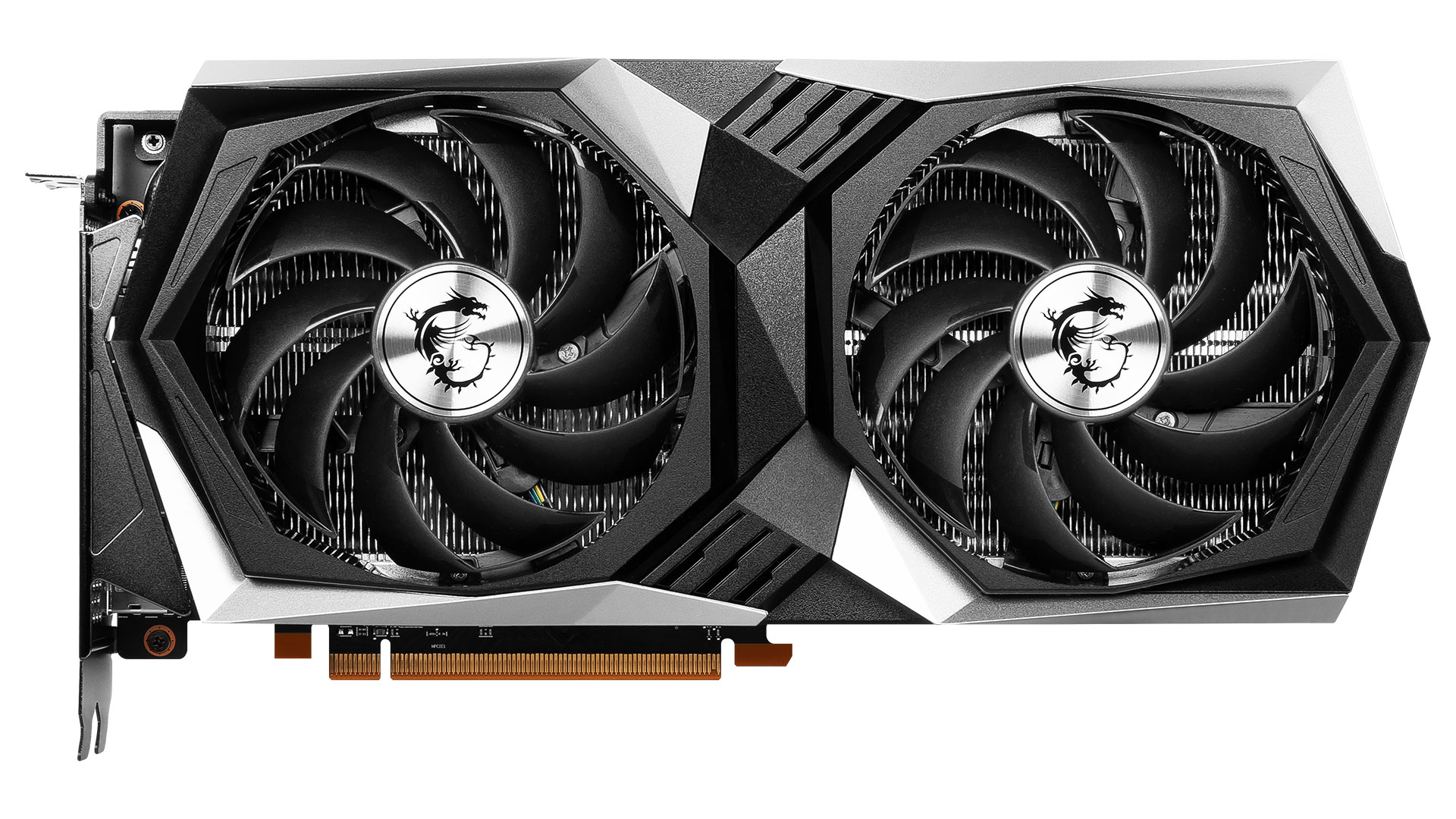


PowerColor RX 6600 XT
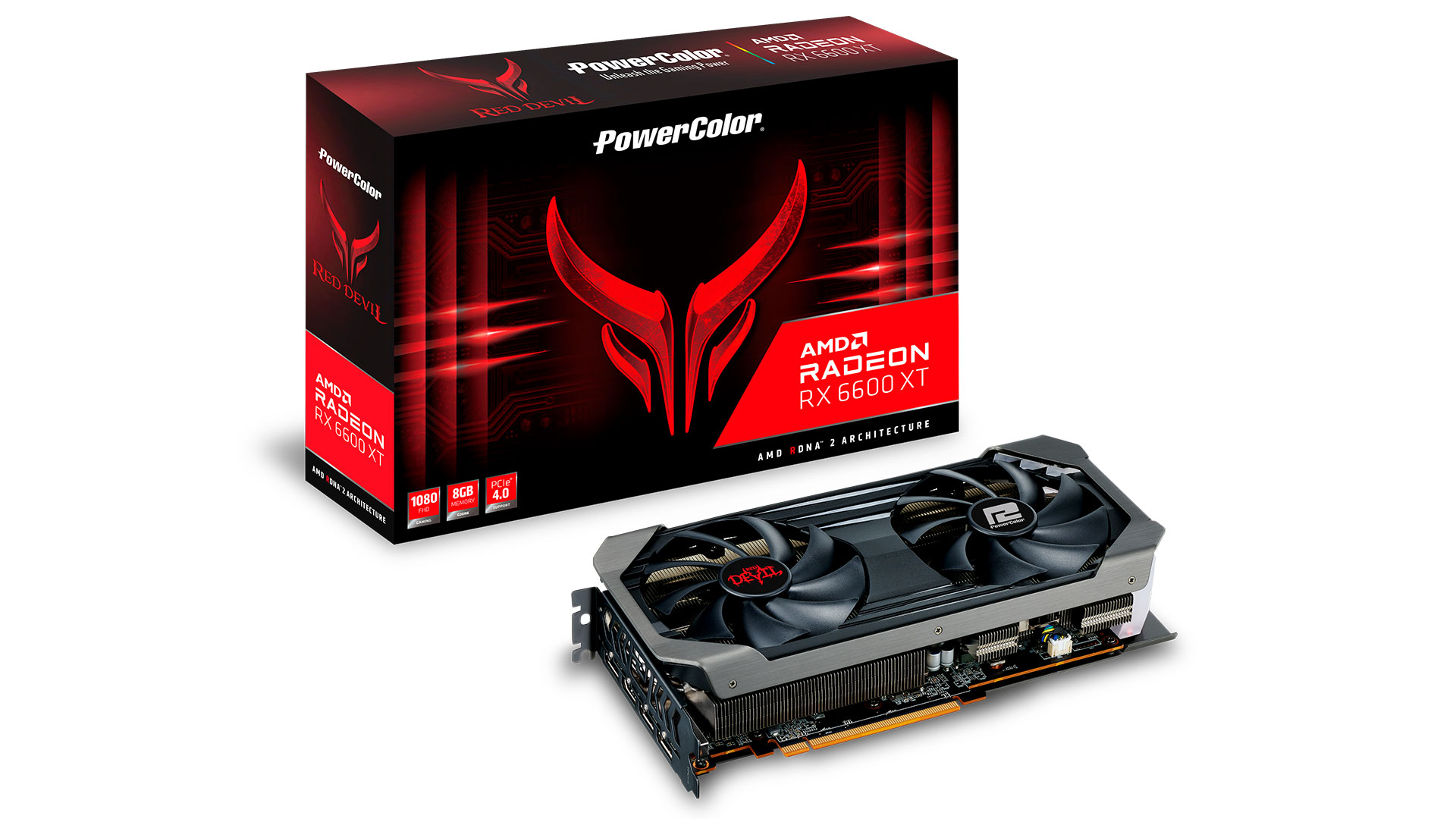




XFX RX 6600 XT


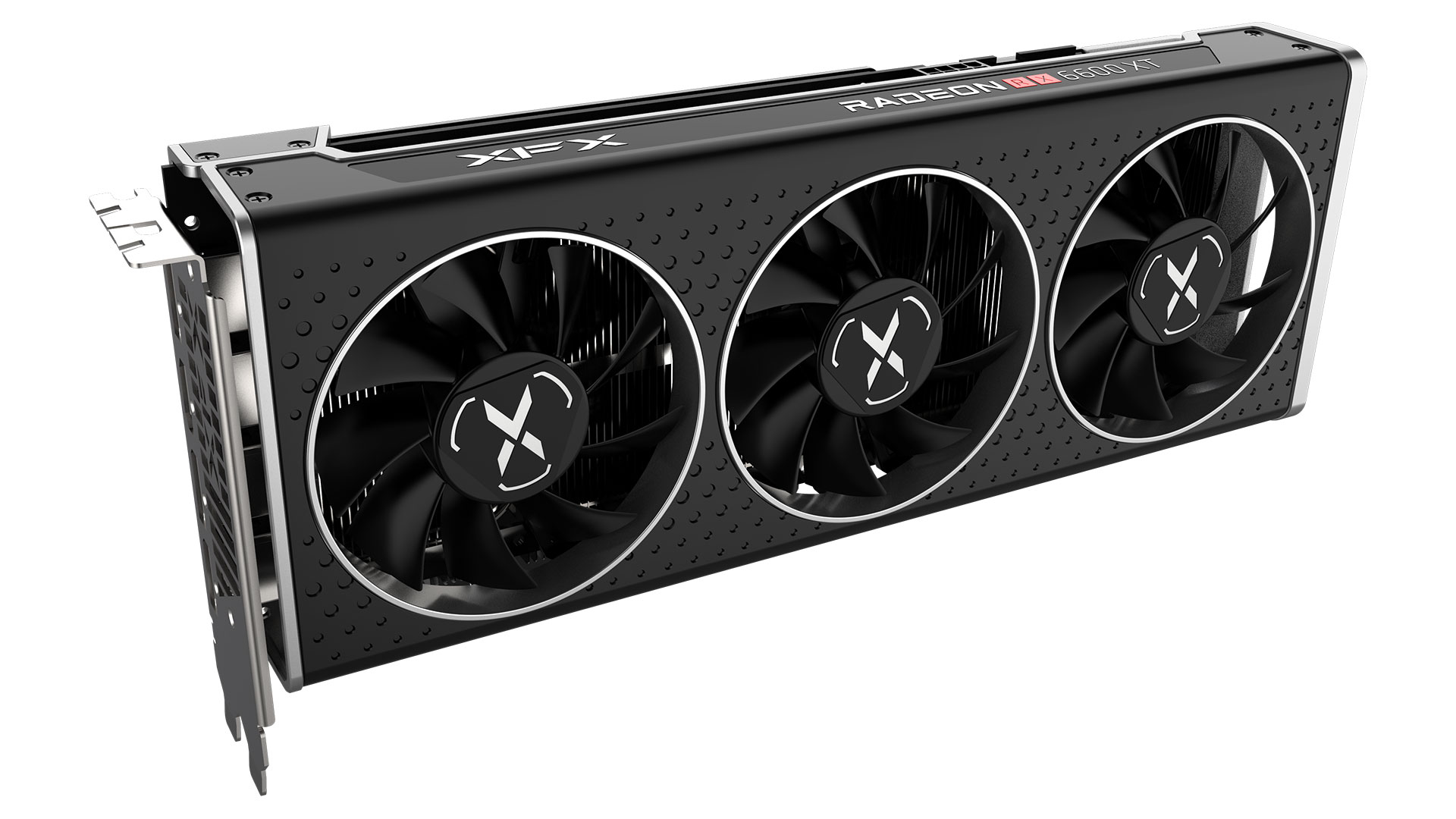


Yeston RX 6600 XT





Get Tom's Hardware's best news and in-depth reviews, straight to your inbox.

Jarred Walton is a senior editor at Tom's Hardware focusing on everything GPU. He has been working as a tech journalist since 2004, writing for AnandTech, Maximum PC, and PC Gamer. From the first S3 Virge '3D decelerators' to today's GPUs, Jarred keeps up with all the latest graphics trends and is the one to ask about game performance.
-
InvalidError AMD cards with 128bits VRAM bus and PCIe x8 are now $400. No huge "infinity cache" to offset the memory bandwidth reduction either.Reply
At least Nvidia still gives a 192bits VRAM bus and 4.0x16 for $50 cheaper if GPUs sold at MSRP.
Not expecting much out of this one. -
JWNoctis I'd wait for a few independent benchmarks first.Reply
And it's not as if certain workloads, which despite everything many of these will no doubt find themselves partaking in, is really all that demanding of VRAM or PCIe bandwidth at all.
O tempora, o mores. -
Giroro AMD has so much confidence in their new $400 card, that they compared it to the GTX 1060, a $200 card that's 2 generations old.Reply
If they want to pick up sales from people who buy $200 midrange cards then maybe they should, you know... Make one. -
mitch074 Reply
That 2 generation old GPU still sold (used) for $250 a pop a couple months ago, and it hasn't gotten much better. Same thing for AMD's RX480/580.Giroro said:AMD has so much confidence in their new $400 card, that they compared it to the GTX 1060, a $200 card that's 2 generations old.
If they want to pick up sales from people who buy $200 midrange cards then maybe they should, you know... Make one.
As for the RAM speed, this just may make these cards less desirable for miners, as the Infinity Cache won't help for these humongous hash machines, while properly tailored games should rock it. -
-Fran- At that price this is a hard pass. Specially knowing it'll be higher than MSRP pretty much everywhere.Reply
Regards. -
escksu ReplyGiroro said:AMD has so much confidence in their new $400 card, that they compared it to the GTX 1060, a $200 card that's 2 generations old.
If they want to pick up sales from people who buy $200 midrange cards then maybe they should, you know... Make one.
Where is the GTX1060 comparison?? The bar chart shows comparison with RTX3060. -
Friesiansam Reply
Given no graphics cards are restricted by the PCI-E 3 x16 bandwidth, PCI-E 4 support offers no advantage.InvalidError said:
At least Nvidia still gives a 192bits VRAM bus and 4.0x16 for $50 cheaper if GPUs sold at MSRP.
Not expecting much out of this one. -
Soaptrail Reply
It was in the first set of slides, it was the 4th/last slide comparing against the 1060 which made me chuckle.escksu said:Where is the GTX1060 comparison?? The bar chart shows comparison with RTX3060. -
Soaptrail ReplyInvalidError said:AMD cards with 128bits VRAM bus and PCIe x8 are now $400. No huge "infinity cache" to offset the memory bandwidth reduction either.
At least Nvidia still gives a 192bits VRAM bus and 4.0x16 for $50 cheaper if GPUs sold at MSRP.
Not expecting much out of this one.
I get the feeling this is more of a $300 card and if supply increases the prices should come down. But how quickly that happens is the issue. -
King_V ReplyGiroro said:AMD has so much confidence in their new $400 card, that they compared it to the GTX 1060, a $200 card that's 2 generations old.
If they want to pick up sales from people who buy $200 midrange cards then maybe they should, you know... Make one.
And they also compare it to the GTX 3060, the RX 5600 XT, and RX 5700.
Still, there's merit to comparing it to the GTX 1060. As mentioned, it's "the most popular GPU on the planet according to the Steam Hardware Survey. " So, for that very significant number of people still using a GTX 1060, it's a "here's what you'll get if you upgrade to the 6600XT" pitch.
Of course, availability . . but, hopefully the smaller Navi 23 chip can be produced in greater quantity.
